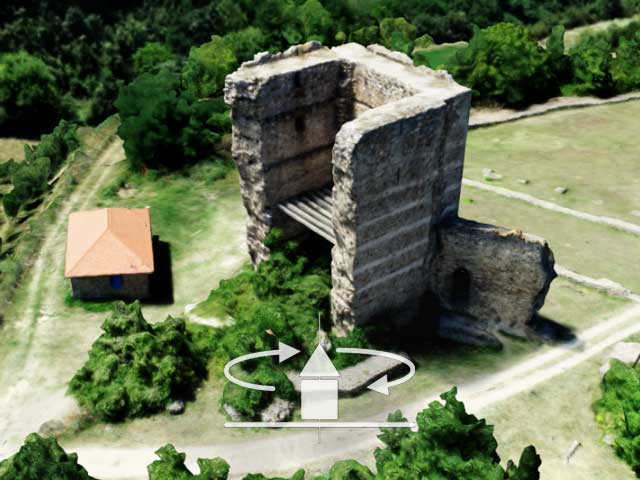MEDIEVAL TOWN Stalac
Protected cultural monument of great importance, listed as SK 169 with the Republic Institute for the protection of monuments of cultural heritage.
Medieval town StalacCicevac
Location
Medieval town Stalac was built on the northeast slope of Mojsinje mountains, on the very top of a saddle-like elevation, high up on a hill dominating the gorge that the river South Morava forms through the Mojsinje mountains. It is in the vicinity of modern day Stalać, 2.5 km south from the estuary of West and South Morava.

The fort was not marked on Google Map, but appeared shortly after we warned of this omission.
Research
Archaeological research begun in 1971 and until 1979 it was mostly performed in the innermost city core. Parallel to the research, the conservation of discovered objects took place.
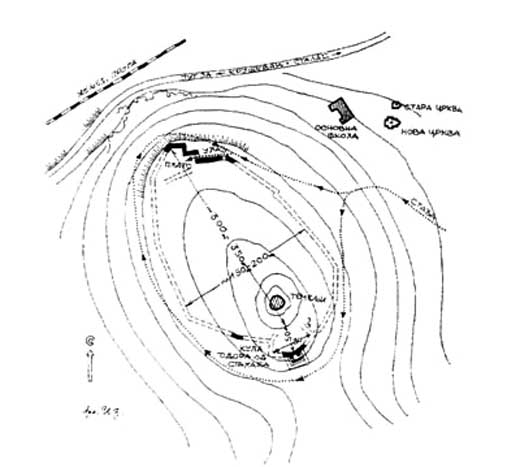
During the research, a lot of materials illustrating city life were discovered. The finds of ceramic vessels are especially interesting, as those were luxurious, enameled and richly decorated with sgraffito technique. Parts of horse equipment were discovered, as well as agricultural and crafting tools, which testifies to highly developed economic activities and of a city where people lived nicely and comfortably.
History
The fort was built at the same time as the town Krusevac, when numerous fortifications in Serbia were renewed, as the danger of Turkish conquests loomed, in 70s of the 14th century. It had a strategic importance, control and defense of the Serbian capital – Krusevac. The first mention in historic sources is in the charter of prince Lazar from 1377 by which he gives to the Ravanica Monastery “the village fair for St. Peter celebration in Stalac”. The next mention is in the charter of princess Milica to the Monastery of St. Panteleimon on the Mount Athos in 1395, when she, together with her sons Stefan and Vuk gifted the monastery with “a man named Stajko in the city of Stalac”. Constantine of Kostenets states the fact that Stalac was conquered and destroyed in 1413 by Sultan Musa. Since it did not have any significant strategic importance, the city ceased to function as an active edifice. However, the village fair in Stalac was preserved for a much longer time.
French travel writer Bertrandon de la Broquière who passed through the area in 1433 wrote about the remains of Stalac. Much later, in the mid-19th century, Austrian painter Felix Kanitz also passed through these parts and wrote about the remnants of a fort.
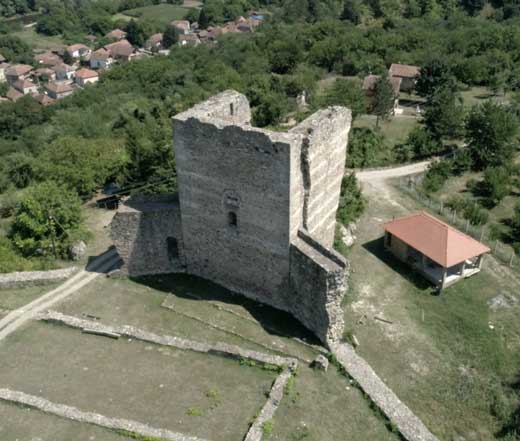
Description
Stalac town was built on a roundly-accessible terrain, which is why it is fortified with massive ramparts ending in tines and arrowslits, with a footpath on the inner side. The ramparts are built with crushed stone bound in lime mortar. The edifice was adjusted to the terrain configuration, both in size and shape.
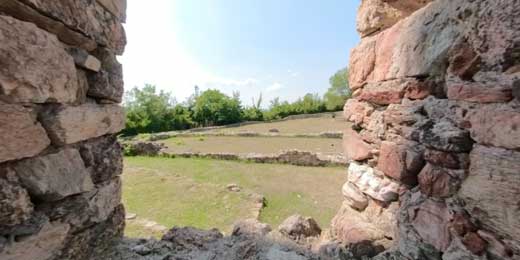
The innermost town core, the Little town, which was formed by partitioning the Lower town, was protected by a powerful four-storey keep, known as Todor’s Keep. The preserved part of the keep stands at 19.5 m, has a ground floor and four storeys, with a gallery on top. There used to be wooden stairs on the inside, and the entrance was on the south side. Moveable stairs, used when needed, lead up to the door. The fort was surrounded by a lower rampart, and in front of the keep a dry moat was also dug. In the middle of the Little town there used to be a nobleman’s palace with a porch with columns on three sides. Near the Little town’s gate, there was a stone-built well, used during the sieges. Opposite the palace, there were several smaller wood-constructed buildings, built along the rampart. One of them must have been the blacksmith shop, as a furnace and numerous iron tools were discovered inside it.
Between the Upper and the Lower town there used to be a wide gate, which was built in at some time of immediate danger, and a drawbar ramp was placed across the pass.
The Lower town remains unexplored, and its ramparts can only be seen by the configuration of the terrain.
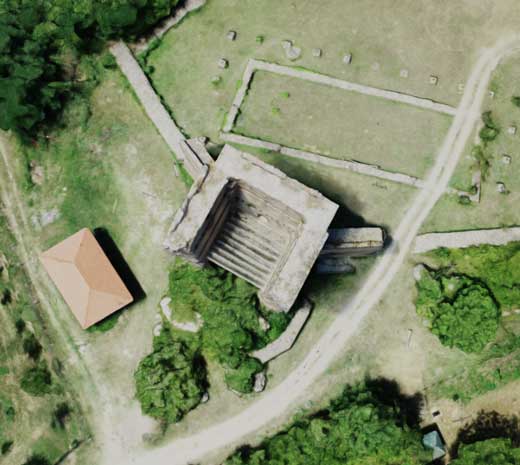
Folk belief
In folk tradition, the fortified town of Stalac is associated with Todor of Stalac, which is why it is also frequently called Todor’s Keep. The folk song “Death of Duke Prijezda” describes the tragic death of the duke and his loved one, Jelica, who jumped into the South Morava river, rather than be captured by the Turks. At that time, the river passed immediately next to the town walls. Travel writers of the era note that more than 100 yawls were anchored on the Morava.
Julka Kuzmanović Cvetkovićarcheologist
